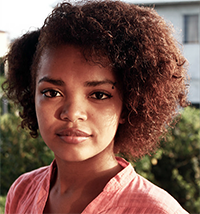A LITTLE over a year ago, social media was abuzz with arguments concerning the use of the coalition’s colours on seemingly everything. From buses, to bicycles, to buildings, it was claimed that these colours were used to further comment upon the coalition’s alleged paramountcy. The “Green and Yellow” debate even raised its head in Parliament, when PPP/C Member of Parliament for Region Nine, Allister Charlie, had asked that “monies for capital projects, not be used to paint national buildings and public spaces in green and yellow.” These colours, he opined, are representative of the ruling coalition and not the colours of the flag as some would argue.
I did not follow up the discussion concerning colours too much. On one hand, I agreed that usage of the two colours was treading on dangerous ground. We live in a racially sensitive country. This racism is mostly insidious, but there is no doubt that it exists. Then there is the politics of the place that is tightly intertwined with the problems concerning race that we have. When one thinks of the supporters of the PPP/C and the PNC, now a part of the ruling coalition, their thoughts go to Indian and Afro supporters respectively.
We all know where this ethnic divide came from. Started since during the days of indentureship and colonisation, racial disharmony was further compounded when the two leaders of the PPP/C Cheddi Jagan and Linden Forbes Burnham fell out. It was a new age of ethnic politics, with each appealing to their own base and it is sad that we still exist in this bubble.
One of the reasons we remain at this junction I believe, is because any dialogue we begin on it is automatically stifled. Somehow, the idea was born that if one dares to talk about race, then that person is automatically racist. But not talking about race just helps it to fester and appear in places we did not expect to see it, such as the whole colour debate. While I agree that its usage was treading on dangerous ground, I felt as though we were making too much out of the entire affair. For as long as I have been seeing visuals in Guyana, green and gold are the two most prominent colours always used to represent us.
The conversation seems to be starting once again regarding the coalition’s use of green and gold. It seems to have been prompted by a Stabroek News photo in which it is shown that the “fence of the Ministry of the Presidency,” was being painted gold and green. This is not so long after part of the MoTP was painted a ghastly green.
Haven’t these two colours been used for years in representation of Guyana? Yes, they have. However, we need to think about the optics, something this government does not ever seem too concerned about. Am I too much of a liberal snowflake in seeing the problems this poses to the man on the street? Several persons think the solution is to add all the colours of the flag instead of the two, but I am not behind this atrocious suggestion.
Am I being too sensitive for believing that in our charged atmosphere where even something as asinine as colour has such large implications, we should aim for neutrality? As state buildings and institutions, the government needs to be cognizant of the fact that they are representatives of all Guyanese and not just the ones who voted for them. The continuous painting of state property in green and gold helps to foster a feeling of alienation in those who may be supporters of another party and this does not bode well for national unity.
Political hubris has always been a problem with which we have to deal and it is often hard for those in government to identify large or small problems they have caused or are creating in their rule. Party paramountcy should never be the norm, even when it comes to small issues regarding colours and the need for neutrality.



.jpg)









